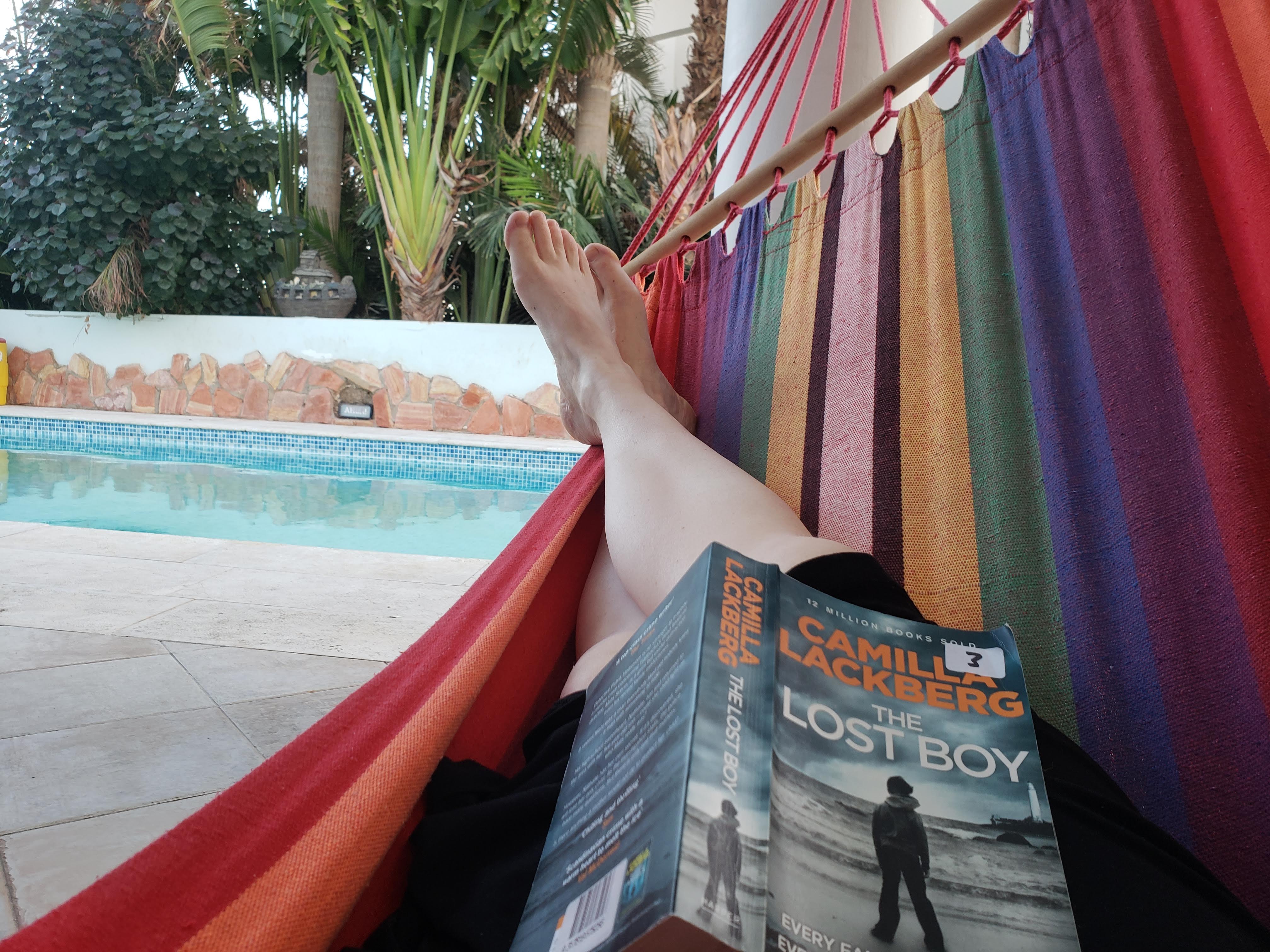It’s more than two months after we left Israel and I am writing my last blog post about the country. We had so many experiences there and perhaps we saved the best for last… hard to compare of course as there were many wonderful and varied experiences.
I’m not quite sure where the Negev desert or the Arava Valley starts and finishes but we enjoyed driving through this region anyway to get to Eilat, Israel’s southernmost city. The mountains just across the border in Jordan supply a stunning backdrop to the valley.
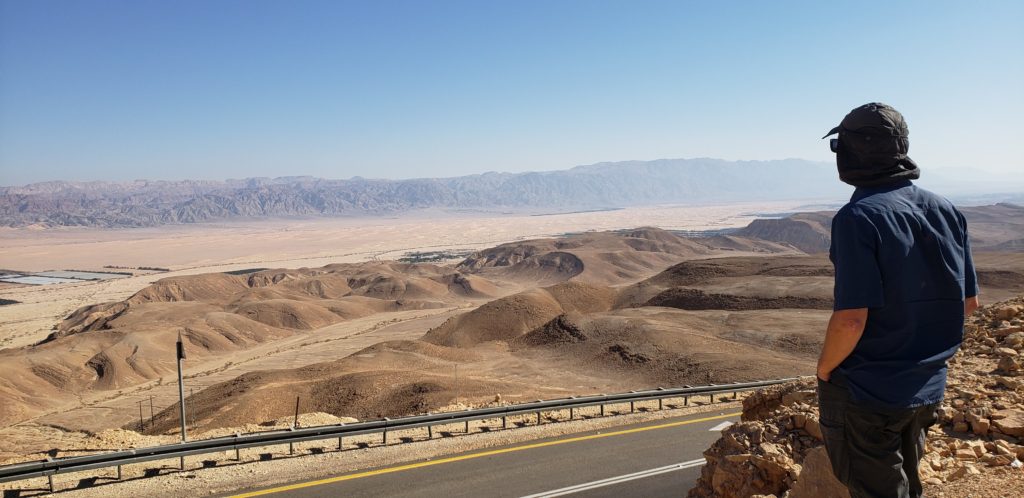
Eilat is right on the Red Sea, with Egypt not far away and the Jordanian city of Aqaba just across the border. We were staying in a dive center but didn’t ourselves venture into the Red Sea from here – that pleasure we saved for our time in Jordan.
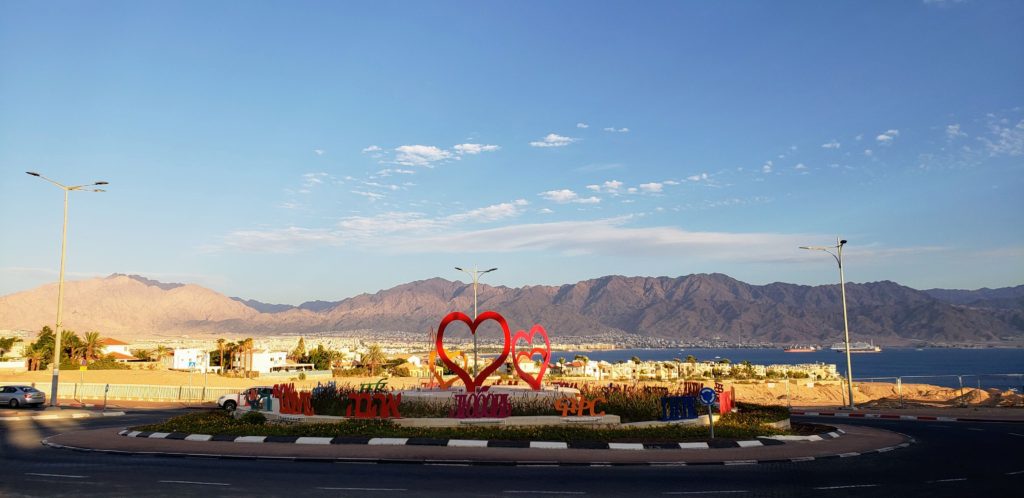
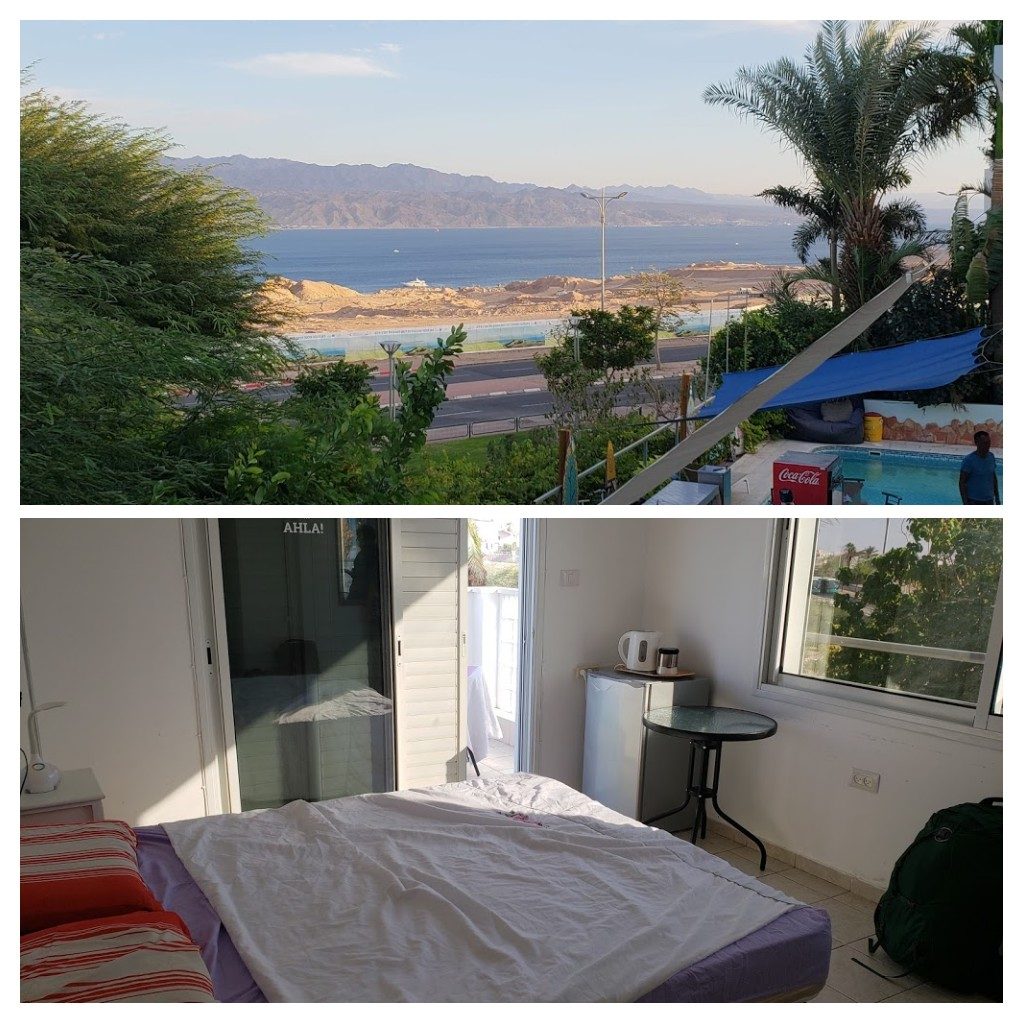
We had a little look in Eilat – down at the waterfront and a bit in the town but really weren’t that interested in the town. I heard Russian spoken everywhere- clearly a popular destination for Russians!
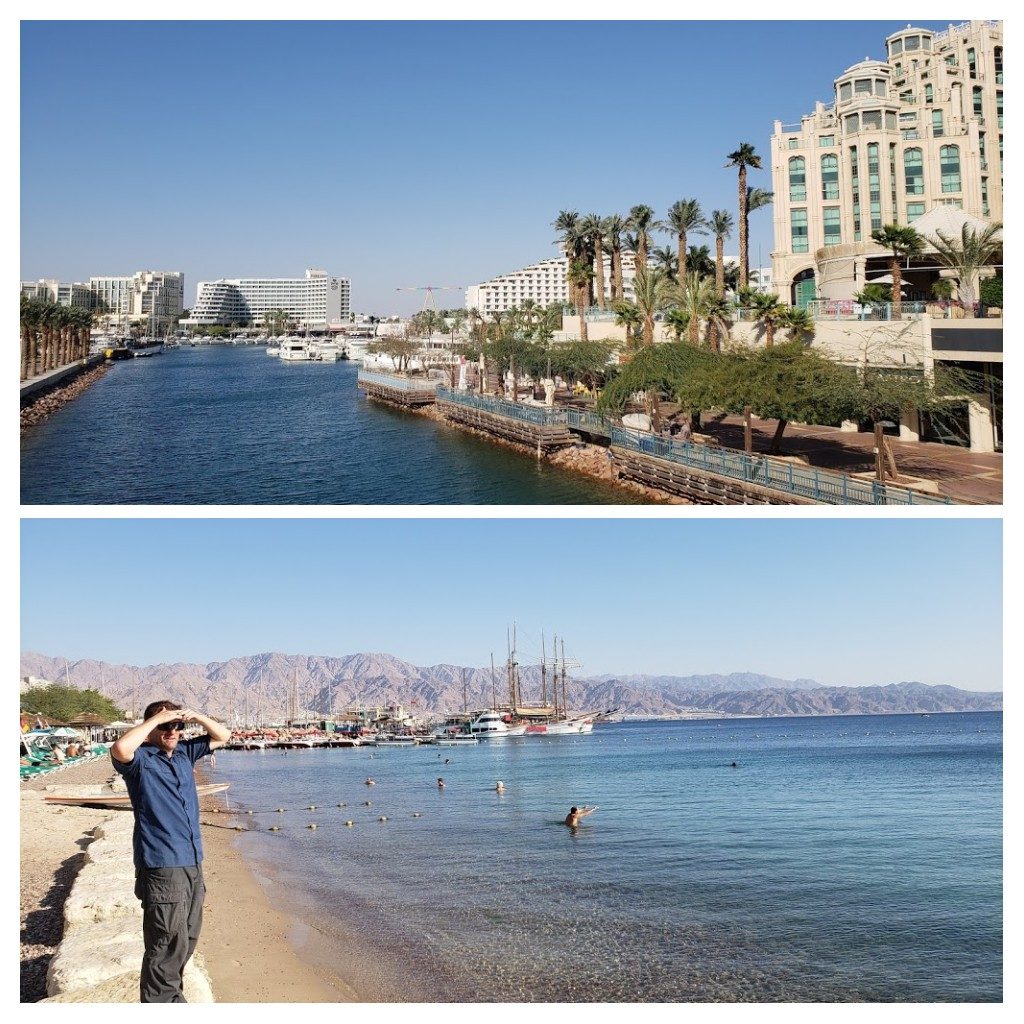
Instead of spending much time in Eilat itself we spent a day at Timna Park, about 25 kms north of Eilat. This wasn’t an Israel Nature and Parks authority national park like all the others we visited. It was more expensive but totally amazing!
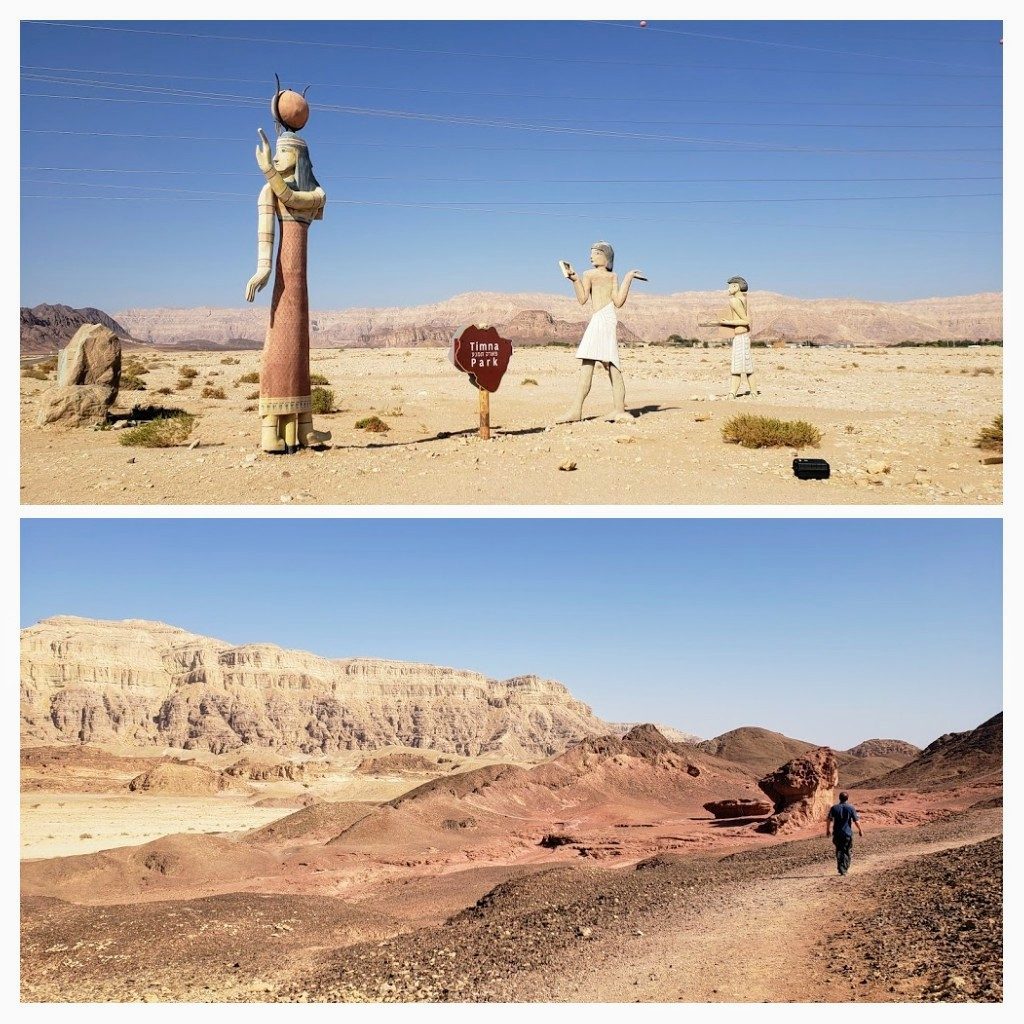
Timna Park has a lot of interesting features and roads that take you to them. The distances are too great to walk – and it was way too hot to consider mountain biking, although that is an option in the park and they have bikes for hire at the visitor centre.

We happily drove round from site to site and at one stage did a walk for about an hour. The 20 walking trails in the park are of varying distances – taking between 1 and 12 hours to walk. We did the walk that first went to the arch (pictured below) then all around and ended up back at the car, covering exposed open areas, tunnels/ shafts and narrow channels through the rocky formations.
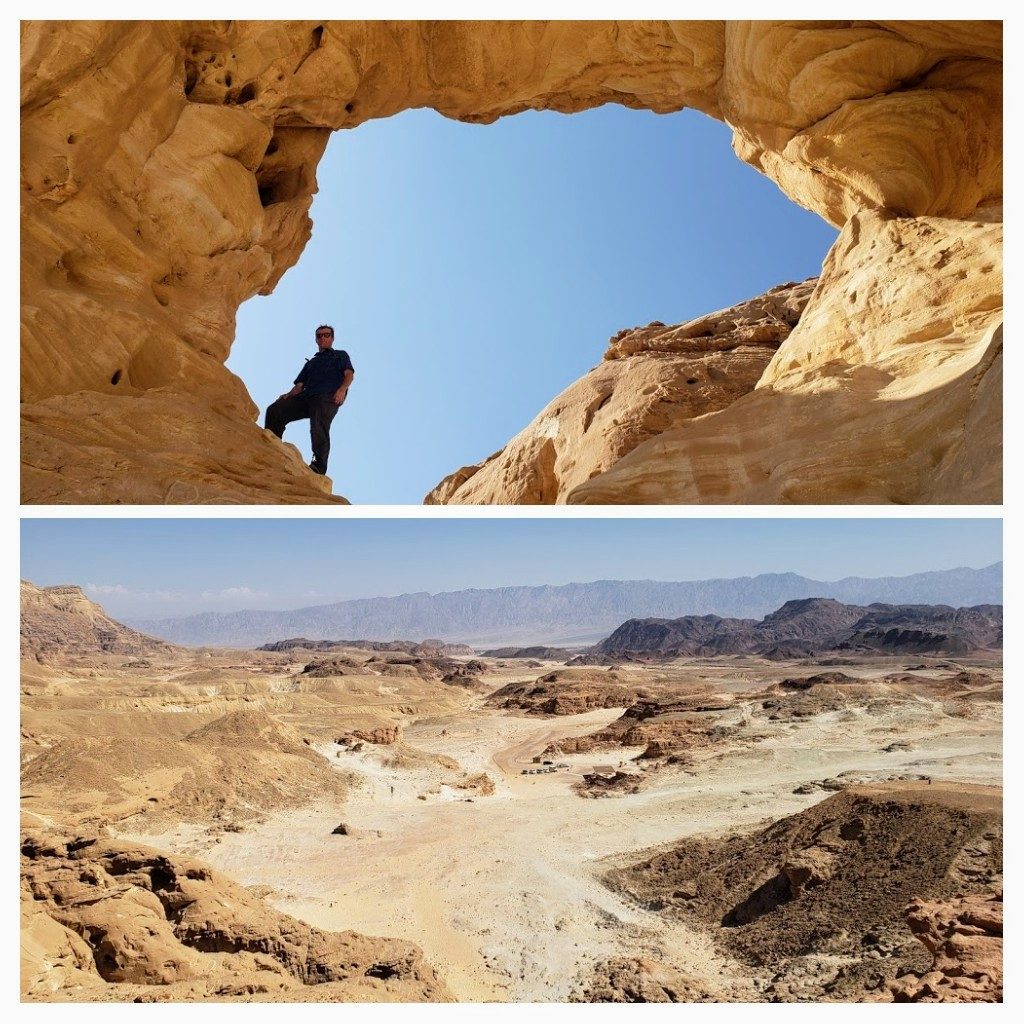
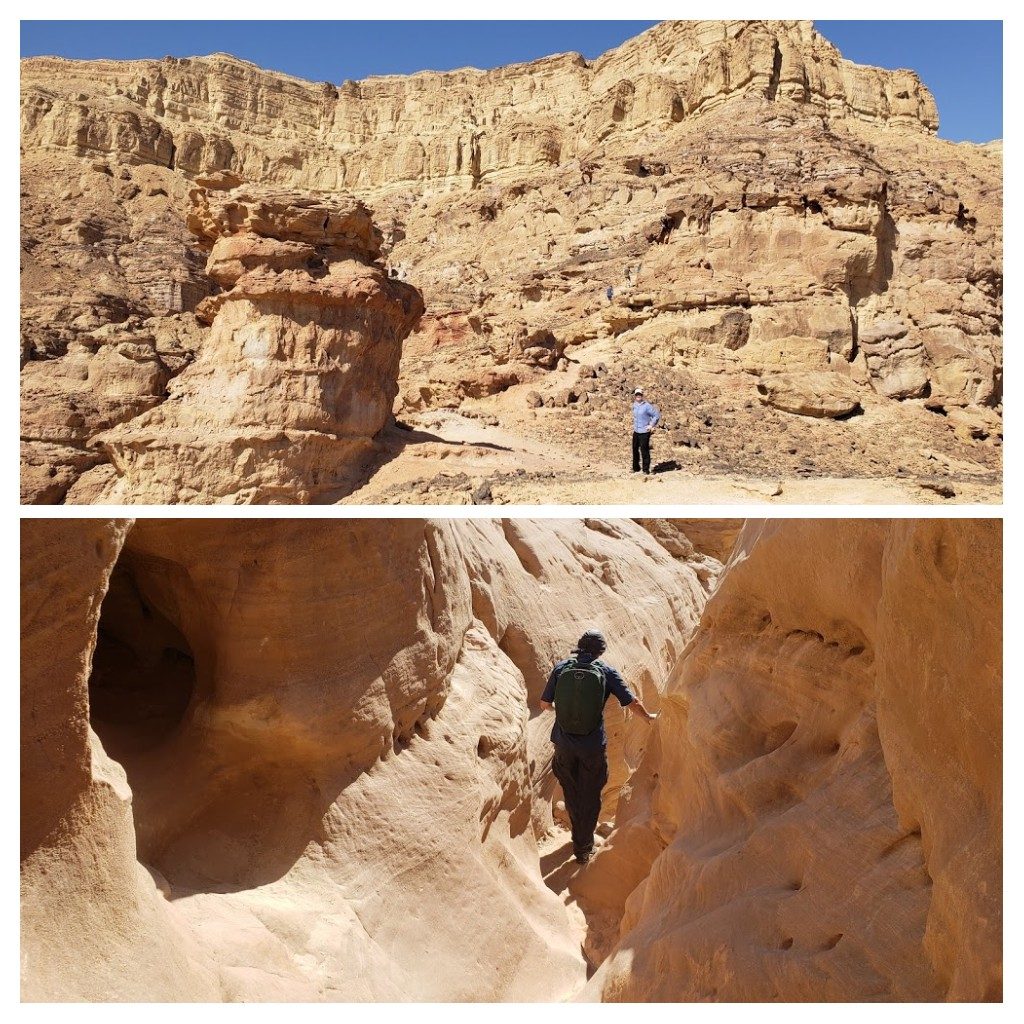
It was slightly nervewracking as we drove in the park that our rental car was showing E for empty on the gas tank, the petrol light went on and there were no petrol stations between there and Eilat! But we made it back without any dramas – phew!
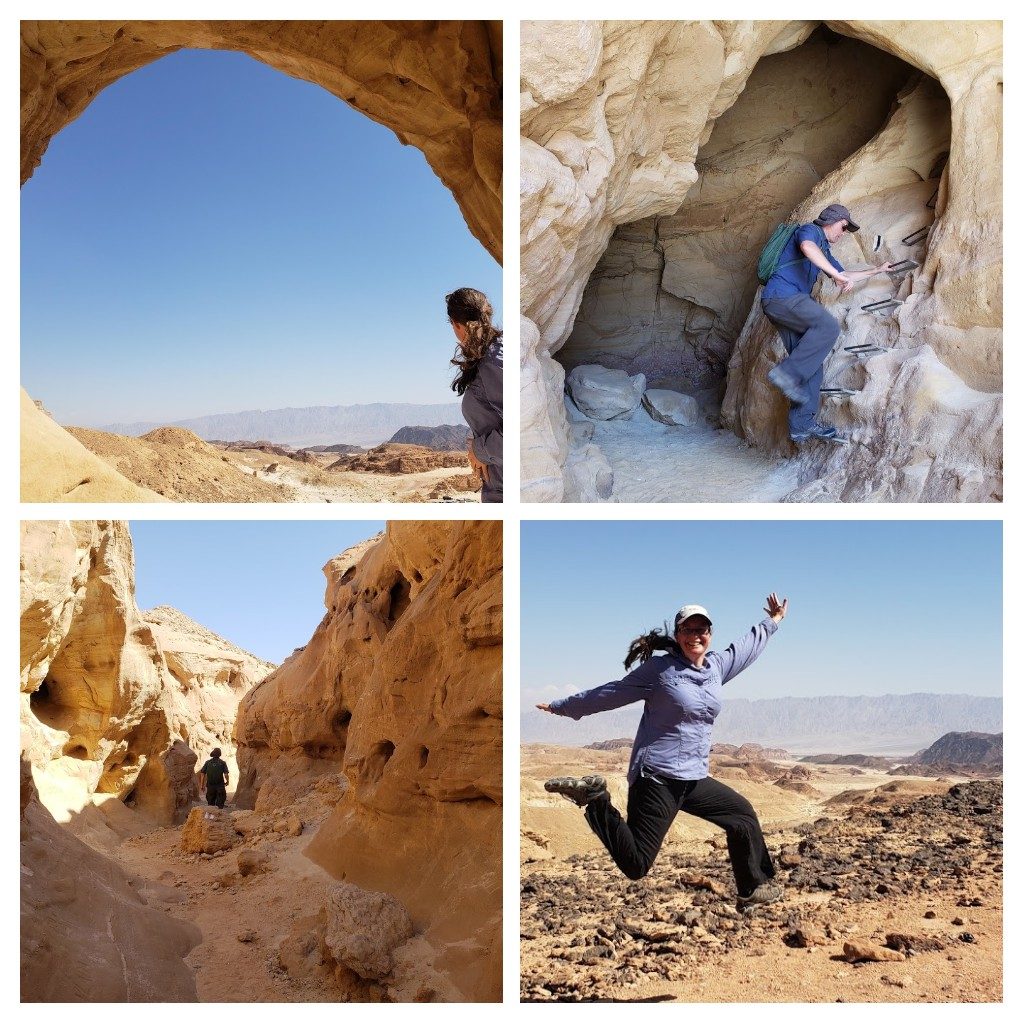
Before we started exploring we watched a movie at the visitors centre about the history of the area and the ancient copper kingdom. Copper mines from 6000 years ago (!!) have been discovered at Timna. Copper was the first metal human beings mined and used. We saw mines from the Chalcolithic period (4500 – 3300 BCE) which are some of the most ancient mines anywhere in the world. Antony is in one of these ancient mines in the picture below.
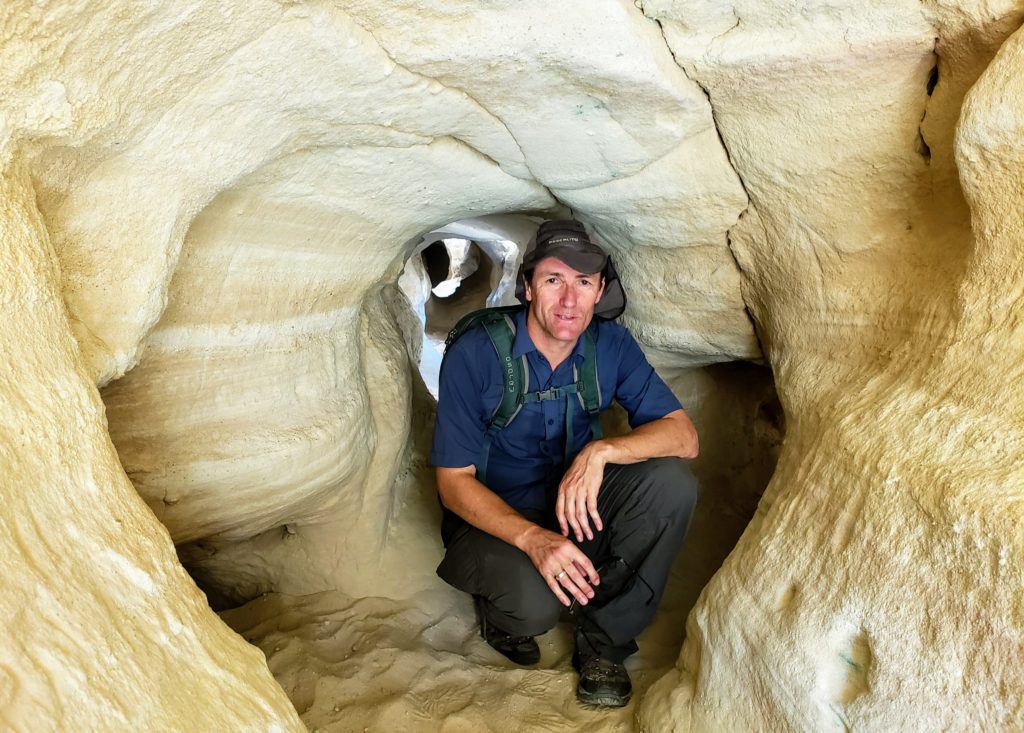
The ancient mines were dug using stone tools and followed the greenish copper veins inside the sandstone – some of which can still be seen. The marks on the walls indicate the era of the mine: dull marks, shallow and rounded = stone tools = Chalcolithic period (4500 -3300BCE), sharp diagonal marks = Egyptian period (14th -12th centuries BCE).
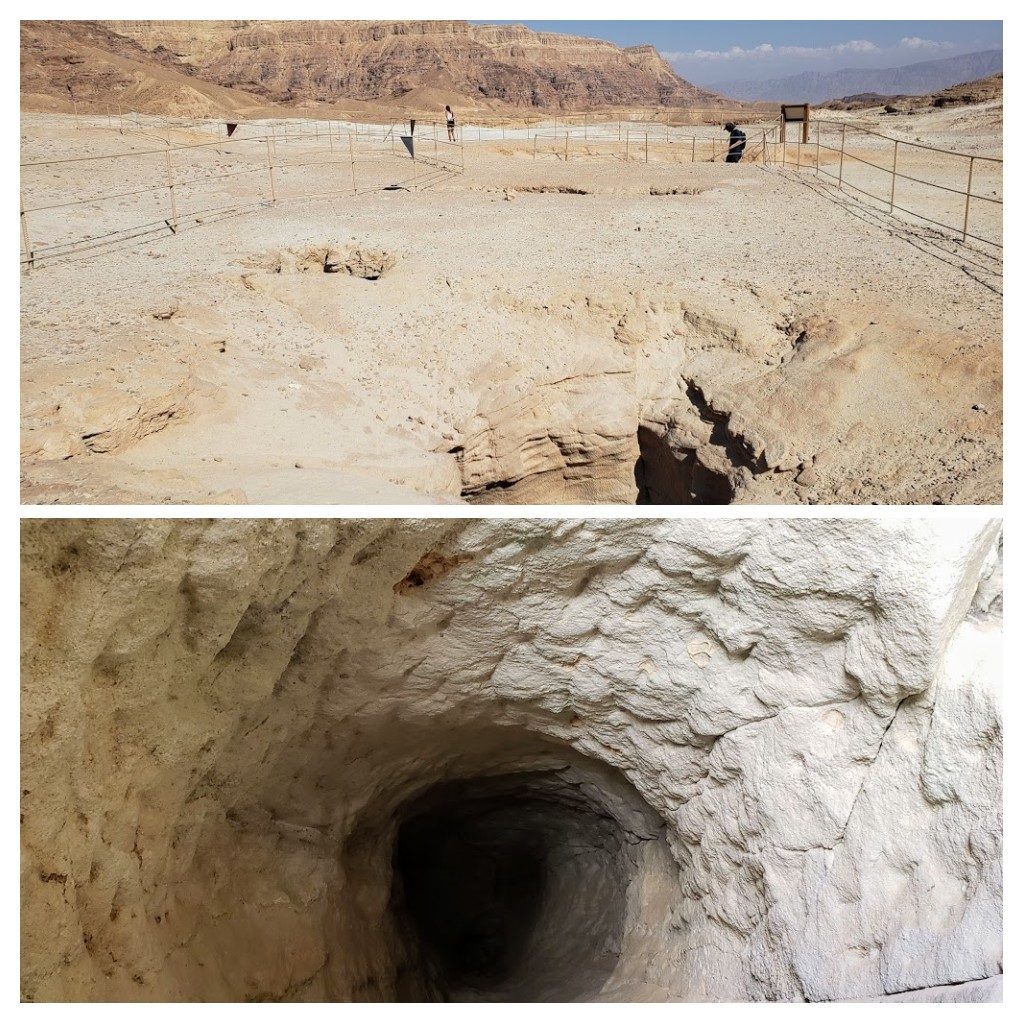
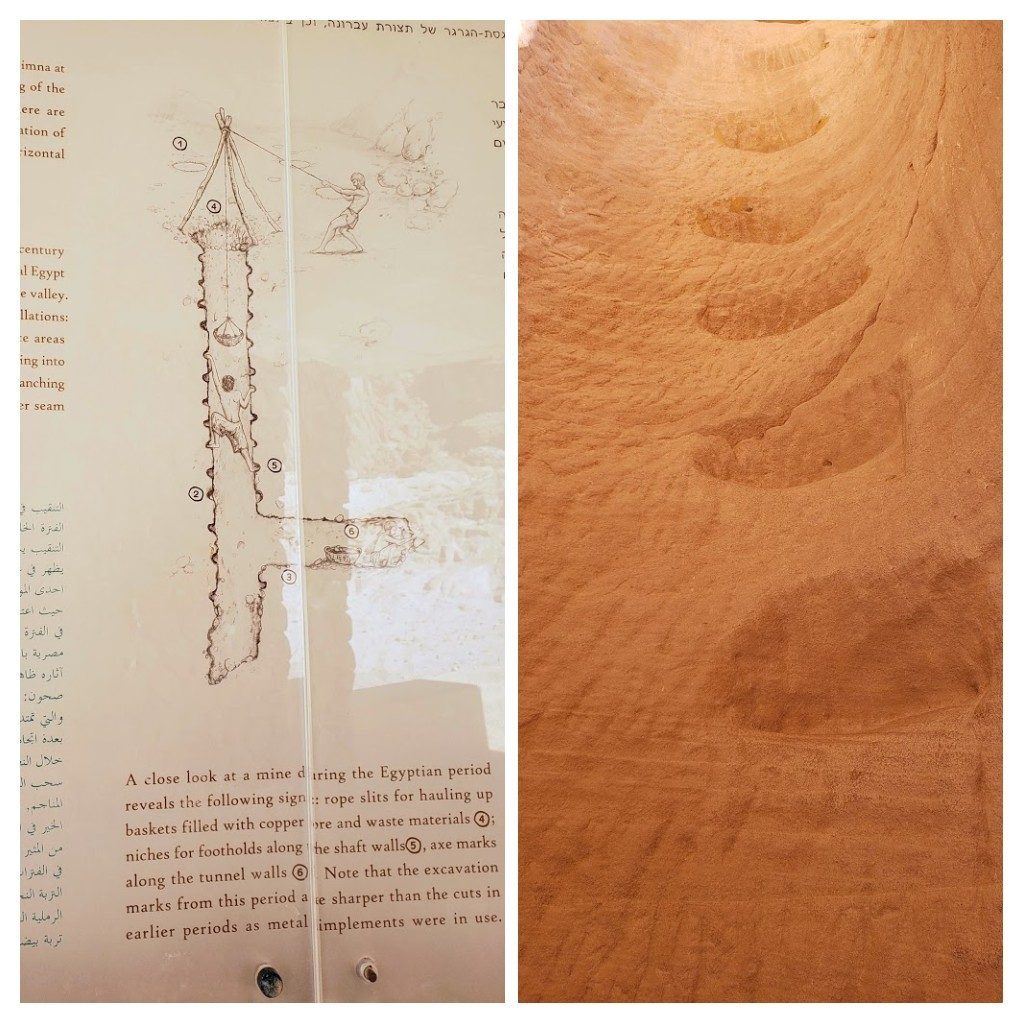
The sites in the park were excavated and exposed mainly between 1959 -1990 by the Arava expedition. During 2016 the expedition found dozens of clothing items from the era of the reign of King David and King Solomon (10th century BCE) – which has given experts a glimpse into methods of dyeing clothes, types of fabric and weaving. The materials have been preserved thanks to the extremely dry climate. Researchers also found olive pits and fish bones.
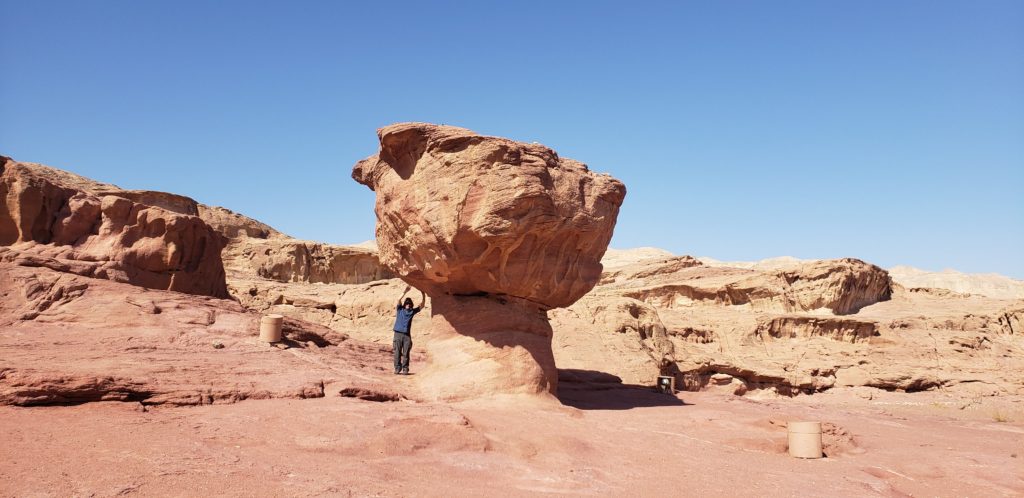
In the 1950s the expedition discovered in Timna valley and surrounding areas huge mining and copper production sites from various periods, as well as living quarters, religious sites, inscriptions and rock paintings. So along with the stunning scenery Timna Park has on offer, the historical sites make it a fascinating place to spend a day!
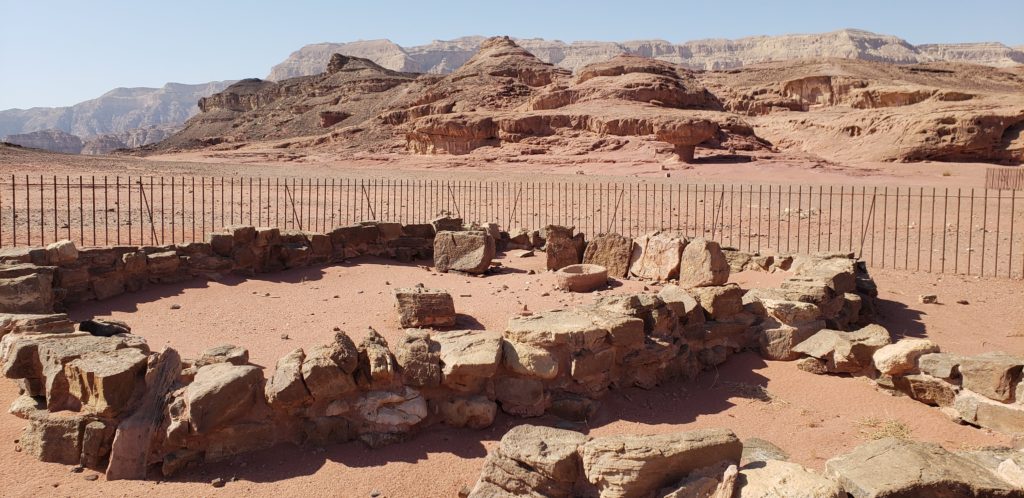
One of the many interesting historical sites we saw was the Copper Smelting Camp near ‘The Mushroom’. As the sign indicates in the picture below they found furnaces for smelting copper from the 13-12th centuries BCE, along with evidence of buildings and cult structures (shrine pictured above).

Copper was first gathered in the Timna Valley in the pre-pottery period (7th millenium BCE), with the first underground mining of it at the end of the Chalcolithic era (4th millenium BCE ). Copper related activity reached a peak between the 14th and 12th centuries when the Egyptians discovered Timna Valley’s potential for copper production. Although this is called the Egyptian period, the Egyptians worked with local inhabitants of the Timna Valley as well as labourers who arrived from Arabia hundreds of kilometres away to the southeast. Researchers propose there was a mixed, multicultural community at this site because of the various pottery vessels they found. Other objects found at the site, in the Workshop area, were mining picks, copper hooks, copper rings, arrowheads, scarabs and Midianite pottery.
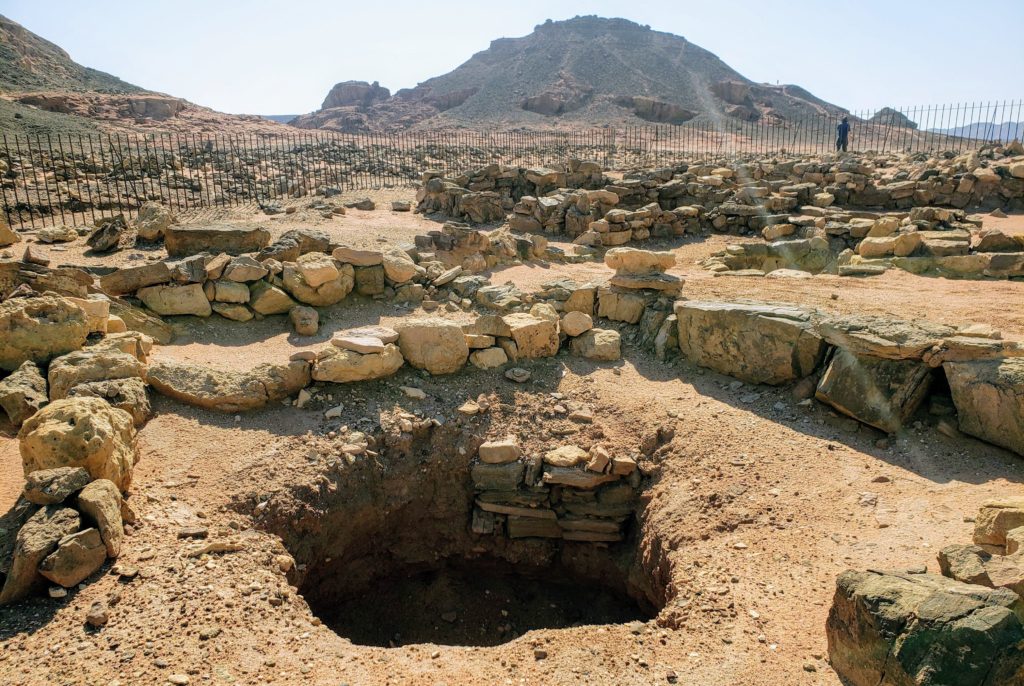
Moving on from mining now let’s take a look at some of the amazing inscriptions and rock art we saw in the area. Some of it was really high up so a bit hard to photograph clearly – I’ve labeled some of the pictures researchers believe to date from between the 14th and 12th centuries BCE. Very cool to see the depictions of human activities and wildlife from those times. Although Egyptian battle chariots feature in the drawings researchers believe them to be done by the inhabitants of the Timna Valley – not those who came from further away to mine copper.
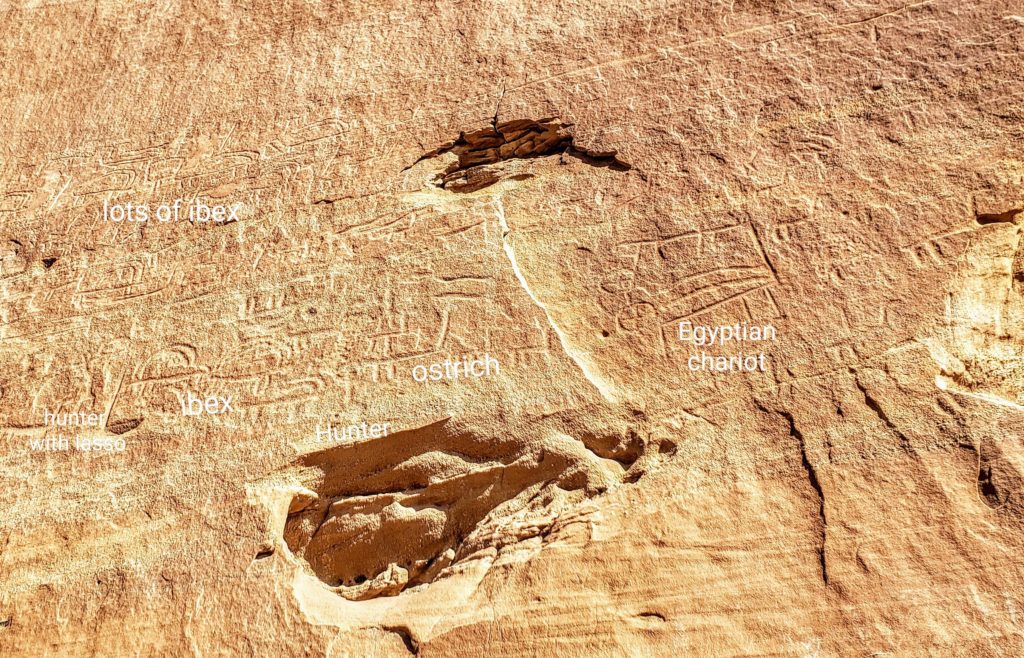
The pictures below make up just part of a larger area full of inscriptions. You can see ox drawn chariots which are manned by Egyptian soldiers and in the bottom right lots of Egyptian soldiers standing. They have battle axes, some are depicted with a short sword and a round shield. Perhaps hard to see in the photos here but quite clear when you are looking at them is the loin cloth which is folded in the front to a pointed apron (looks a bit like a large something else!!) – typical attire for Egyptian soldiers of that time. There are also a few Midianites drawn – one in bottom photo. They are tall, wearing large headgear and carrying long swords with a hilt and wear tassled kilts.

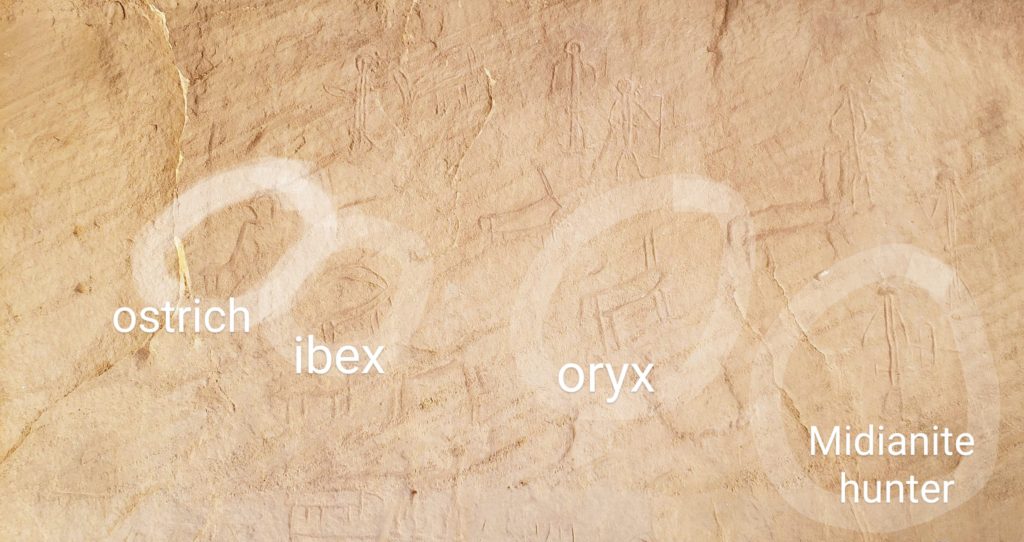
Another famous engraving was really high up on a flat cliff wall – from the viewing point there was a metal scope pointed at it so you could look through to find it. It was quite different to the others that showed hunting and wildlife scenes. This one is of Ramses handing an offering to the goddess Hathor, who holds an Ankh, a symbol of life and fertility. The royal Egyptian rock engraving is from the 12th century BCE and features hieroglyphs under the image. The hieroglyphic inscription bears the name and title of the leader of the Egyptian expedition who left the engraving behind. My photos aren’t worth sharing as it is hard to make it out but this photo shows where it is. How they got up there to engrave it I don’t know.
Just below this site is Hathor’s Temple also known as the Miners Temple. In the 14th – 12th centuries BCE, this was the key site in the valley for Egyptians to worship the goddess Hathor, guardian of the miners. It seems the Midianites could worship here too. When the Egyptians left, the Midianites dismantled some of the architectural elements of the sacred chamber and disfigured them to make them look like natural markers.
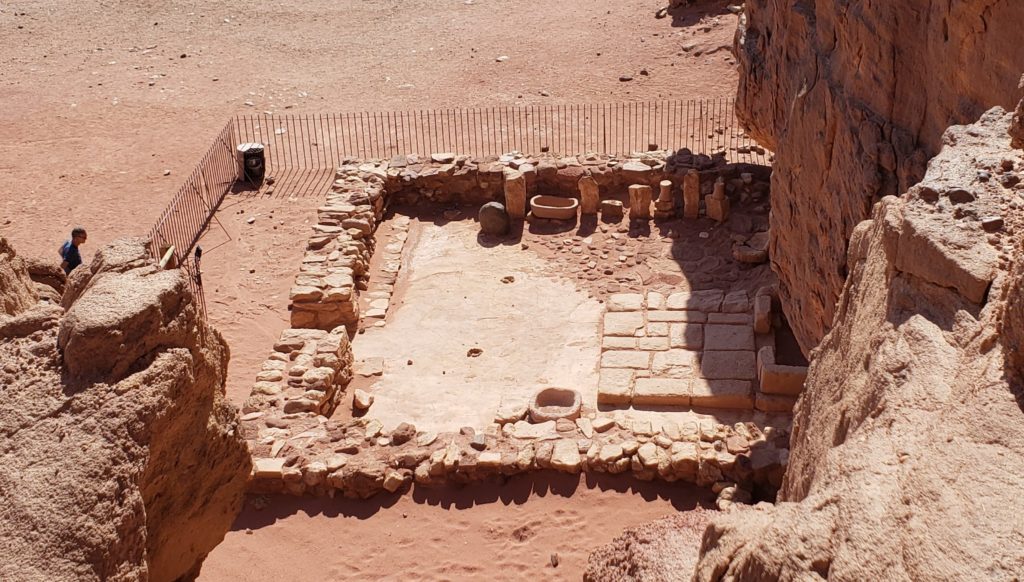
Round the corner from the temple is one of Timna Park’s star attractions – Solomon’s Pillars. The huge sandstone pillars are a natural part of a cliff wall and developed as a result of erosion along cracks in the hard red sandstone. They were named after King Solomon due to a mistaken theory that copper mining and production were a part of Solomon’s activity in this area.
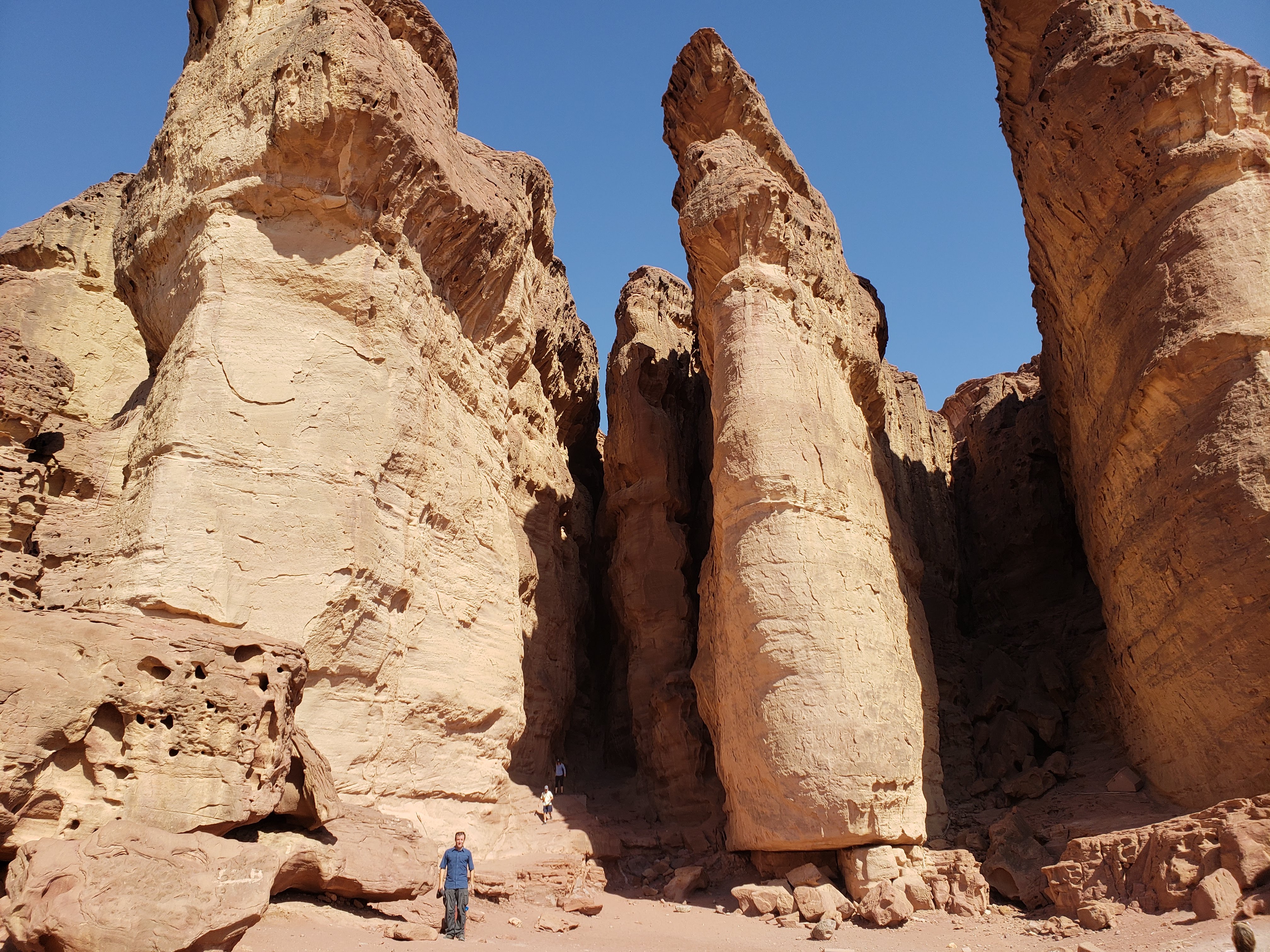
The pillars are imposing and impressive! Then when you get close to them, you can see they are also beautiful with all the ways the rock has eroded to form so many interesting patterns in the reddish walls.
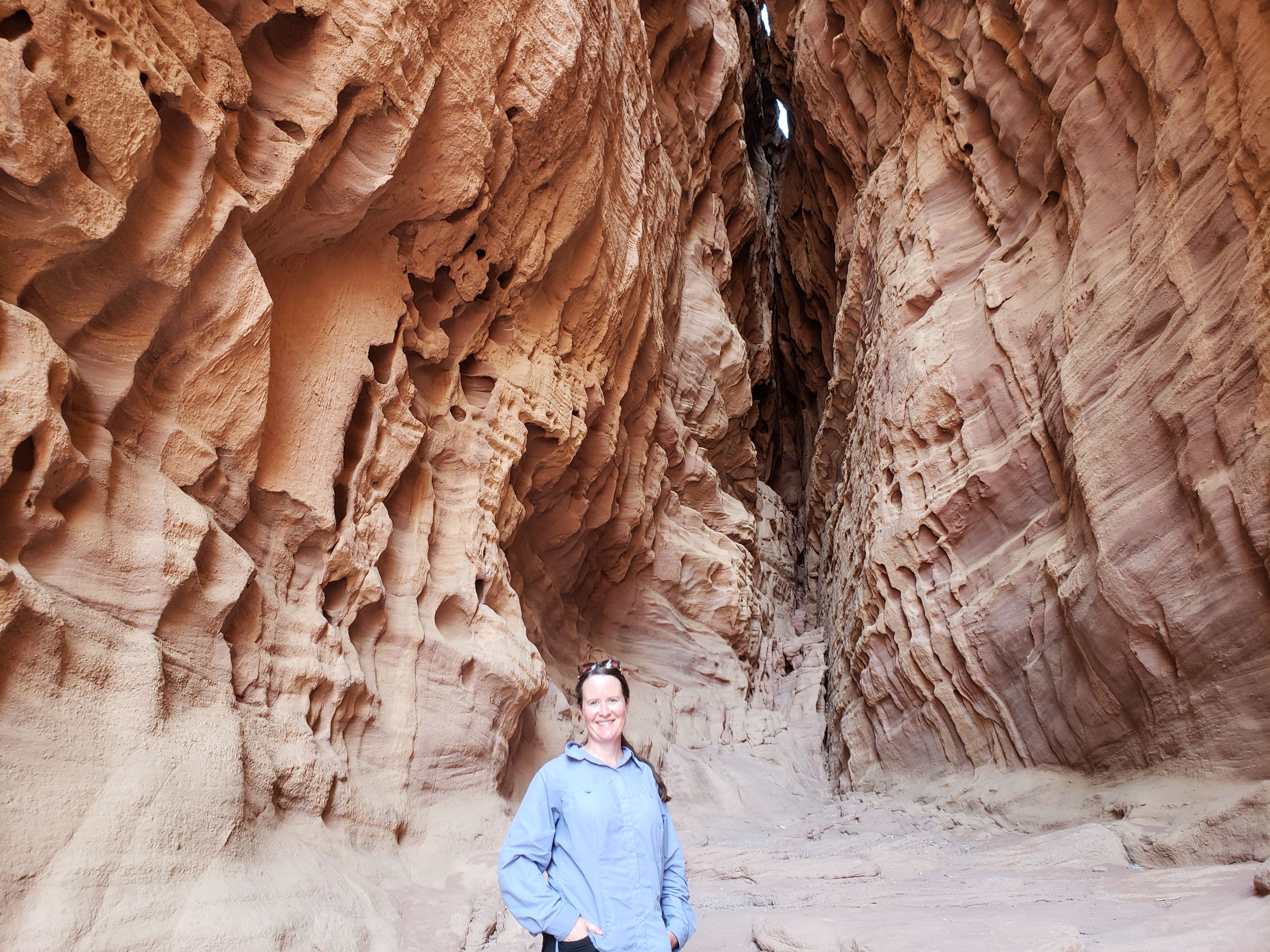
Having seen all the main things, we followed the road to a nice oasis (Timna Lake) where it is possible to eat at the restaurant, ride little boats on the water and create bottles full of colourful sand. We did the latter – but didn’t put enough sand in it as later it all moved and mixed up, oops!
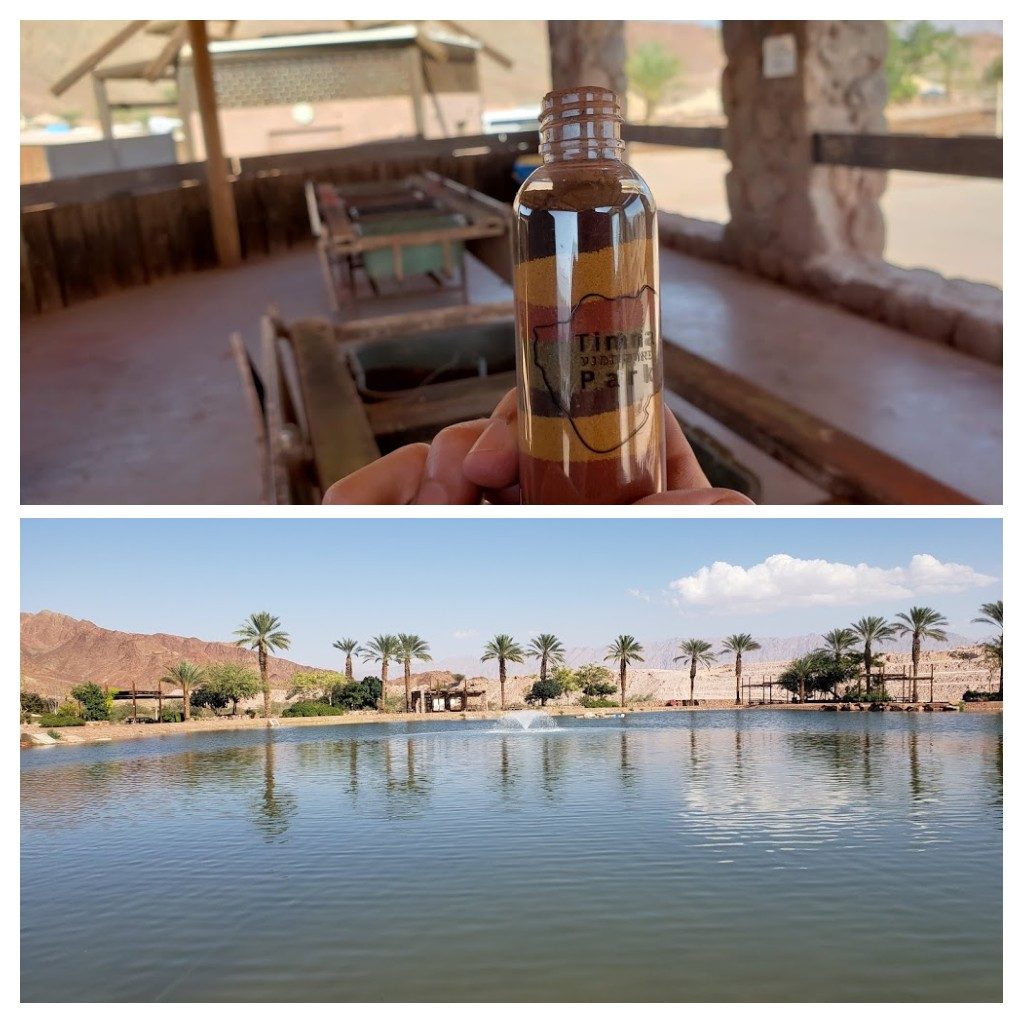
After a thoroughly interesting day we fueled up back in Eilat (grateful to make it to a petrol station!), looked around town then returned to our accommodation at the dive centre. There was a pool which Antony had a swim in but it was freezing so I only got part way in before deciding it wasn’t for me!
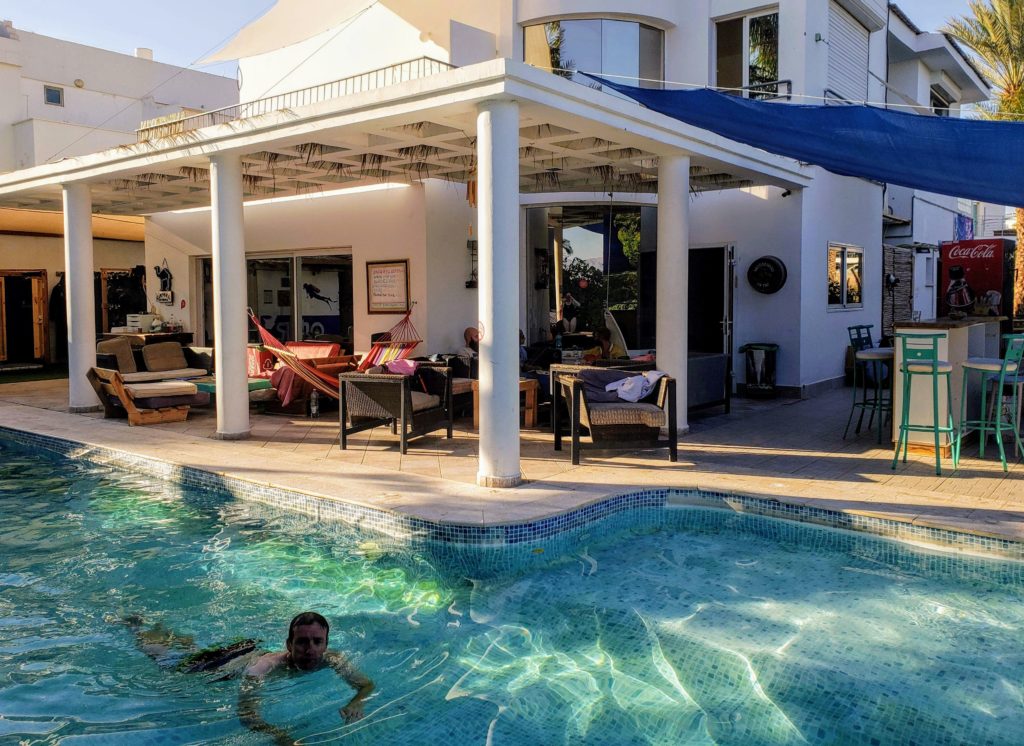
I enjoyed reading in the hammock beside the pool though. Nice end to our time in Israel. We crossed the border into Jordan the following morning and had a week in Aqaba – that’s the subject of the next post.
